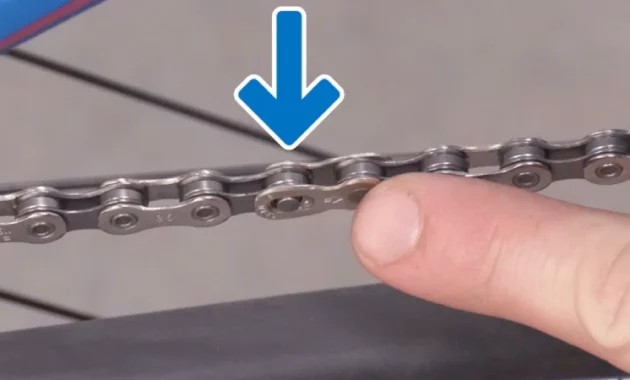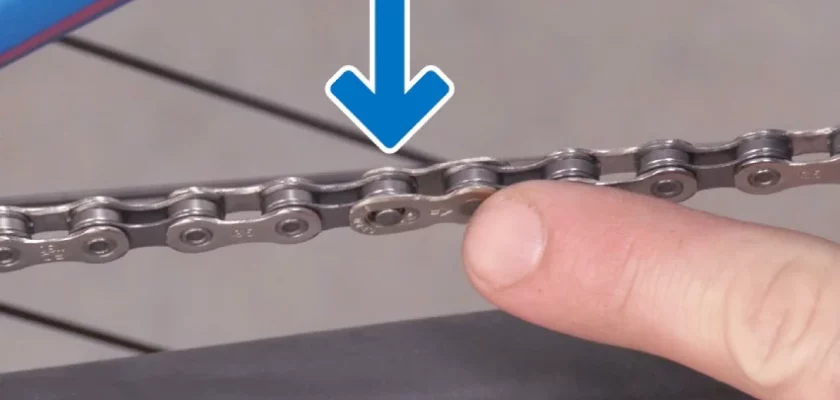Chains are essential to a bike’s gear because they move the power from the pedals to the wheels. Over time, a bicycle chain may require maintenance or replacement, so knowing how they’re put together is important.
Among the bike chains, the ones with a “master link” are the easiest to put on and take off.
A master link is a particular type of link that is used in bicycle chains. It is also called a quick link or a connecting link. It makes joining or breaking a chain for installation, removal, or cleaning easy without using a chain or other specialized tool.
How to find a master link on a bike chain depends on the chain type. Most current bicycle chains do have a master link, especially those that are made to be easy to put on, take off, and fix.
This article will tell you the methods to locate the master link on a bicycle chain and give you step-by-step steps to help you keep your chain in good shape or replace it.
Understanding Bike Chain Anatomy
Before finding the master link, you must grasp bike chain anatomy. Inner and outer plates, rollers, and pins make a bike chain. Inner plates engage with the chainring and cassette, while outer plates protect the internal components from dirt and debris.
Knowing the anatomy will help you find the master link. Here’s how knowing how the chain is put together can help you find the master link:
Differentiating the Master Link: The master link is a unique kind of bike chain link that simplifies the process of both installing and removing the chain. If you know how the chain is put together, you can tell what makes the master link special, like its shape, color, or design. With this information, you’ll be able to tell the master link apart from the other links in the chain.
Identifying Outer Plates: As mentioned earlier, the outer plates of a bike chain protect the inner components. They often have distinctive features or markings that can serve as visual cues for locating the master link. By recognizing these features, such as a different color, logo, or stamping, you can narrow down the search and identify the master link.
Locating the Clip or Pin: In some cases, the master link may have a specific clip or pin that holds it in place. Understanding the chain’s anatomy helps you know where to look for this clip or pin. Typically, it will be found on the outer plate or have a different design compared to the other links. By recognizing this unique feature, you can easily spot the master link.
How To Find A Master Link On Bike Chain

Here are the steps to locate the master link of a bicycle chain:
Step-1: Position The Chain
Find a stable bike stand: It’s made to hold your bike securely upright, which makes working on it easy. Look for a strong frame that can handle the size and weight of your bike. Even if you don’t own a bike stand, there are other ways to store your bike.
Flip the bike over: Don’t have a bike stand? You can flip it over so it sits on its handlebars and saddle. This puts the bike in a stable position that lets you turn the pedals quickly and check the chain without getting in the way.
It’s essential to ensure that the spot where you flip the bike has no fragile parts that could get broken.
Positioning the bike securely: Whether you use a bike stand or turn it over, it’s essential to ensure the bike is stable and won’t move or fall. Follow the steps on the bike stand to ensure the bike is locked securely. Find a flat, safe place to flip the bike over so you don’t hurt yourself.
Step-2: Position Yourself
Stand on the side of the bike with the gears. The chainrings are the front gears connected to the pedals, and the rear cassette, which is a group of gears on the back wheel, are on the drivetrain side, also called the right side of the bike.
This part of the bike is important for getting power to the wheels and changing gears. By standing on the drivetrain side, you can get to the parts of the drivetrain system more easily. This makes it easier to repair or make adjustments.
Step-3: Find The Type Of Master Link
Different master links can be used on different bike chains. The quick link and the traditional chain with a master link are the two most popular types. The quick link is easy to see and stands out.
It looks like a normal link but has a way to lock it. A classic chain with a master link is held together by a separate plate that can be taken off.
Step-4: Turn The Pedals
Start turning the wheels to move forward. You can turn the pedals by hand, or you can put light pressure on them with your foot. The chain will move along the chainrings and rear cassette when you do this.
Step-5: Check Out The Links
As the chain moves, carefully look at each link as it goes through the back derailleur (the part that guides the chain) and the chainrings. Find a link that is different from the others.
The master link is generally different from the other links in the chain because it has a plate or clip that can be taken off.
Step-6: Identify The Master Link
If you see a link that doesn’t look like the others, it’s probably the master link. It might be a different color, shape, or pattern than the other links in the chain. The goal of the master link is to connect the chain and make it easy to take off and put back on.
Step-7: Verify The Master Link
To ensure you’ve found the master link, see if it’s easy to take apart or open. The method for creating the master link will determine if a special tool is required or if you can simply move it manually with your hands. If you can easily pull the link away from the rest of the chain, then it is the master link.
How To Unlock The Master Link
Depending on what kind of master link your chain has, you can open it in different ways:
Traditional Master Link
Some chains have a traditional master link that needs a special tool. Put the tool into the slots on the master link’s plate, and then push or pull the tool to separate the plate from the link’s pins. This will open the master link, letting you take the chain apart.
Quick-Link Master Link
Many current chains have master links that can be opened by hand and don’t require any tools. Follow these steps to open a quick-link master link:
- Hold the chain with your thumb on one side of the master link and your index finger on the other.
- Put pressure on the master link in different directions to squeeze the plates together.
- Push the two plates of the quick-link apart while keeping the pressure on. This will open the master link and make the chain come apart.
Benefits Of A Master Link On A Bike Chain
A master link on a bike chain offers several benefits, including:
Easy chain maintenance: Master links simplify chain maintenance. The master link simplifies chain cleaning and replacement. Removing the chain without tools saves time and work.
Chain replacement convenience: The master link makes chain removal and installation easier than breaking it with a chain tool, which takes time and precision. This helps during roadside maintenance and rushes.
Compatibility with different chain lengths: It lets you add or remove chain links to adjust gearing, cassette, chainring size, or chainstay length. This adaptability helps optimize the drivetrain.
Reduced dependency on chain tools: You won’t require a chain tool for basic repairs or maintenance, simplifying repairs and maintenance. It can benefit bikers without substantial mechanical skills or a full toolkit.
Can I Convert A Regular Chain Into A Master Link Chain?
No, Most of the time, you can’t change a normal chain into a master link chain. Bike chains are made with or without master link compatibility in mind, and changing a normal chain to make it work with a master link may weaken it and make it less reliable.
Final Words
The master link plays a crucial role in the functionality of a bike chain. It is easy to wear., take off, and fix. Any biker needs to know how to find the master link because it makes it easier to do things like clean, lubricate, or replace the chain.
If you follow the step-by-step steps in the article above, you’ll be able to confidently find the master link on your bike chain, which will make maintenance easy and quick.
Remember that keeping your chain in good shape makes your ride smoother and extends the life of your bike’s gear.

